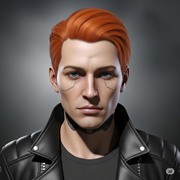Why in AI Design Does Headshot Accuracy Matter?
Usually high-reward mechanics, headshots cause additional damage or instantaneous elimination of enemies. Consistent headshot landing by AI-powered foes might make the game seem rigged. Conversely, should bots miss every shot, they lose credibility and immersion breaks down. Maintaining justice and reality depends on finding the proper mix.
Human-Like Behavior: Beyond Simple Accuracy
Making reasonable AI headshots does not mean arming bots with laser focus. It’s about assuming human responses and decision-making. This includes:
- Reaction Time Variance: Introducing randomized delays to simulate human reaction speed.
- Target Prioritization: Teaching bots to aim for the head only when it makes tactical sense—like during close combat or stationary targets.
- Accuracy Degradation: Factoring in movement, weapon recoil, and bot stress levels to influence shot quality.
Training Techniques for Balanced AI Headshots
Modern developers often use machine learning or behavior trees to train AI behavior. Here are some useful methods:
 Supervised Learning: Feeding bots thousands of human gameplay samples to learn shot timing and positioning.
Supervised Learning: Feeding bots thousands of human gameplay samples to learn shot timing and positioning.- Inverse Kinematics (IK): Ensuring that bots naturally align their posture, head, and weapon with their target before firing.
- Environment Awareness: Training bots to assess cover, lighting, and movement patterns before aiming for the head.
Preventing Unfair Advantage
One of the biggest risks in developing strong AI is making it too perfect. Implementing the following can prevent bots from feeling unfair:
- Miss Tuning: Deliberately introducing calculated inaccuracies.
- Difficulty Scaling: Adjusting headshot frequency based on player skill level or game mode.
- Feedback Loops: Monitoring player frustration via heatmaps or telemetry and adjusting AI behavior accordingly.
Conclusion: Smart, Not Overpowered
Incorporating realistic AI headshots into your game can greatly enhance immersion and challenge. But realism doesn’t mean perfection. By combining human-like behaviors with dynamic systems, developers can create AI that feels smart—without crossing the line into frustrating. After all, the best headshots are the ones that feel earned—even when they’re coming from a bot.

 Supervised Learning: Feeding bots thousands of human gameplay samples to learn shot timing and positioning.
Supervised Learning: Feeding bots thousands of human gameplay samples to learn shot timing and positioning.